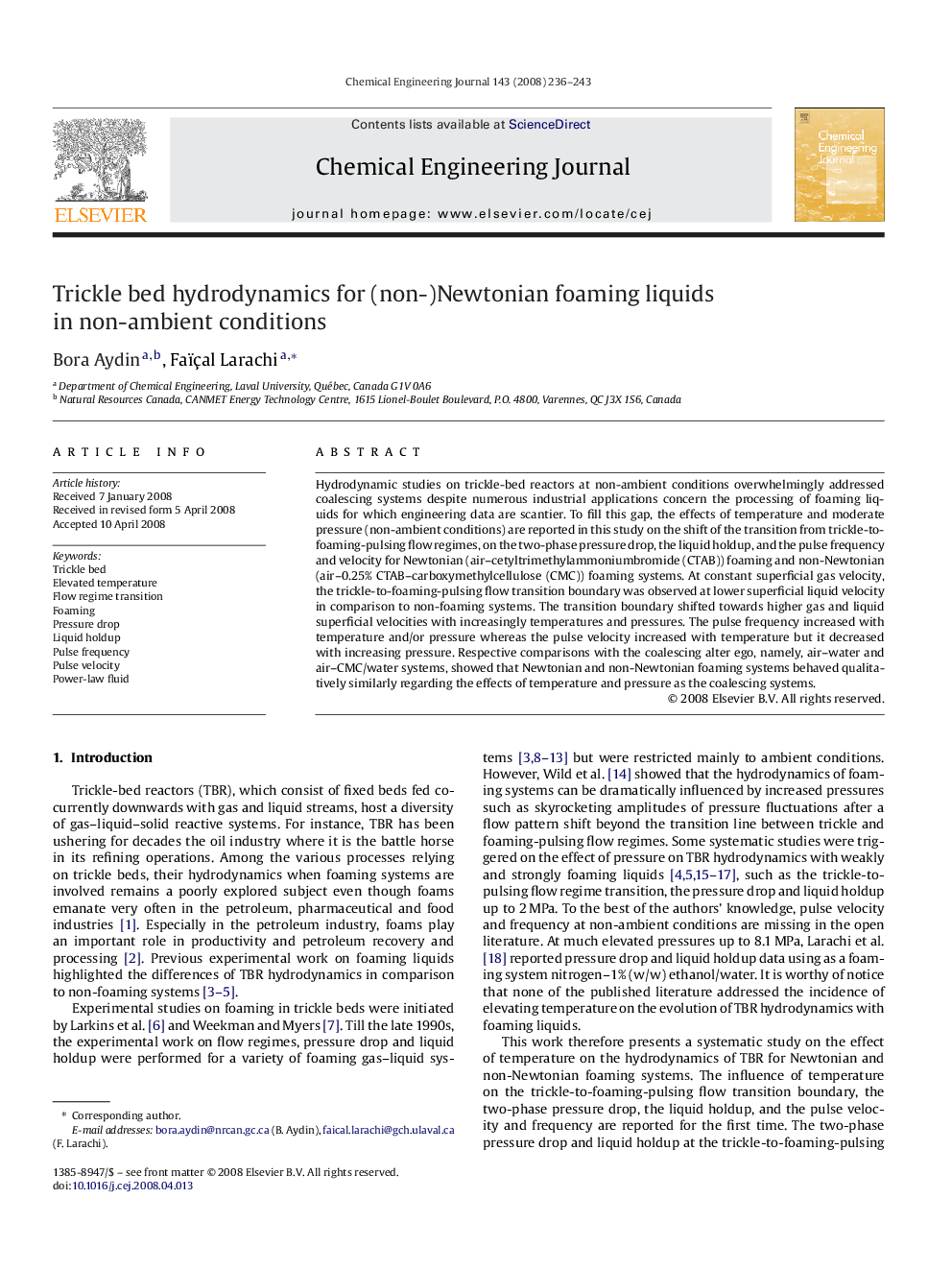| Article ID | Journal | Published Year | Pages | File Type |
|---|---|---|---|---|
| 152927 | Chemical Engineering Journal | 2008 | 8 Pages |
Hydrodynamic studies on trickle-bed reactors at non-ambient conditions overwhelmingly addressed coalescing systems despite numerous industrial applications concern the processing of foaming liquids for which engineering data are scantier. To fill this gap, the effects of temperature and moderate pressure (non-ambient conditions) are reported in this study on the shift of the transition from trickle-to-foaming-pulsing flow regimes, on the two-phase pressure drop, the liquid holdup, and the pulse frequency and velocity for Newtonian (air–cetyltrimethylammoniumbromide (CTAB)) foaming and non-Newtonian (air–0.25% CTAB–carboxymethylcellulose (CMC)) foaming systems. At constant superficial gas velocity, the trickle-to-foaming-pulsing flow transition boundary was observed at lower superficial liquid velocity in comparison to non-foaming systems. The transition boundary shifted towards higher gas and liquid superficial velocities with increasingly temperatures and pressures. The pulse frequency increased with temperature and/or pressure whereas the pulse velocity increased with temperature but it decreased with increasing pressure. Respective comparisons with the coalescing alter ego, namely, air–water and air–CMC/water systems, showed that Newtonian and non-Newtonian foaming systems behaved qualitatively similarly regarding the effects of temperature and pressure as the coalescing systems.
